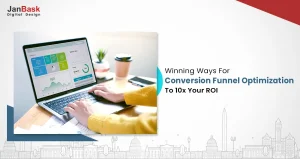
Websites attract thousands of visitors daily, but only a small percentage take action, such as subscribing or making a purchase. Conversion Rate Optimization (CRO) bridges the gap between website visitors and actual conversions. CRO combines artistic and scientific principles to transform website visitors into active customers and subscribers while building user loyalty. Small and large businesses can substantially increase website conversion rates through effective CRO strategies that propel business growth.
This blog explores how implementing conversion rate optimization strategies leads to business success while providing real-world examples and actionable insights. If you are new to CRO, no need to worry; we’ll explain it and show you easy-to-follow, effective conversion optimization techniques. The final lesson will equip you with the skills to turn your website into a robust conversion engine.
Conversion Rate Optimization, or CRO, is the practice of converting more of your website traffic into buyers. It is concerned with making the aspects of your site that prevent individuals from acting, such as purchasing a product, subscribing to a service, or clicking on a call-to-action button.
Rather than trusting guesswork, Conversion Rate Optimization is based on actual data. You try various versions of a page, measure what works best, and retain what performs well. It's all about optimizing what already exists, so you see better results without growing your ad spend.
If you already have traffic but visitors aren't converting, CRO helps you figure out why. Perhaps they're lost, distracted, or uncertain. CRO locates these problems and addresses them one at a time. The outcome? More leads, more sales, and more value from each visitor who comes through the door of your site. To truly grasp the impact of Conversion Rate Optimization, it helps to understand how it's measured.
To understand whether your CRO efforts are truly effective, it's important to measure them using a simple formula:
Conversion Rate = (Number of Conversions ÷ Total Visitors) × 100
Example: if 1,000 people visit your website and 50 of them book an appointment, your conversion rate would be:
(50 ÷ 1,000) × 100 = 5%

CRO is most effective when used on the correct pages, the ones that have a direct influence on user decisions. These are the top places where CRO has the most significant impact:

First impressions count. A messy or confusing homepage can drive visitors away. CRO ensures better navigation, messaging, and visual flow so users remain and explore.
A landing page is designed to drive one specific action, such as signing up, downloading a guide, or scheduling a demo, which is considered landing page best practice. CRO is all about testing things that have a direct impact on that action, such as the clarity of the headline, CTA button location, form length, and how well the message aligns with the ad or link that led them there. Even minor tweaks, such as adding social proof near the form or minimizing distractions below the fold, can lead to significant conversion gains.
Potential buyers are present here. CRO resolves hesitations, brings attention to positive points, and encourages action without flooding the viewer with information.
This is where many users drop off. CRO simplifies the process by removing distractions and reducing steps, so more people complete the action.
Blogs can generate leads as well. CRO streamlines how and where you put CTAs, such as "Download Now" or "Schedule a Call," and makes them work better without interrupting the content. Want to make your CTAs more effective?
Unlocking higher conversions is not a matter of speculation; it requires understanding user behavior. Examining session recordings, scroll maps, and bounce rates reveals what’s working and what’s not. These insights help refine your website, eliminate barriers, and turn hesitant visitors into engaged customers. Let’s examine key strategies that make conversion optimization more data-driven and impactful.
Understanding user behavior is at the heart of conversion optimization techniques. Gaining insights about the behavior and expectations of the users visiting your webpage is similar to finding undiscovered treasure. Every single click, scroll, and pause on their part is a powerful indicator of their expectations. It is possible to tap into behavioral patterns, optimize their user journey, and increase their likelihood of purchasing. Let's look at the metrics that help comprehend the factors impacting the functionality of a website positively or negatively.
Session recordings allow users to observe their visitors accessing the site, which tells marketers how their website functions. Every single click and scroll is accurately captured, along with the mouse movement.

Session recording helps you answer the questions above and more. This software can help those who wish to understand user behavior unearth those hidden obstacles.
An example could be that users of an online store are abandoning sales because the “Add to Cart” button is malfunctioning. Software like FullStory and Hotjar allows easy access to the information and contents of the filled-out form, making it possible to improve the site and increase conversion rates.
For instance, if you used FullStory’s session replay of an abandoned form on your website, you’d see something like this, enlightening you about the actions your user took before and after abandoning their form.
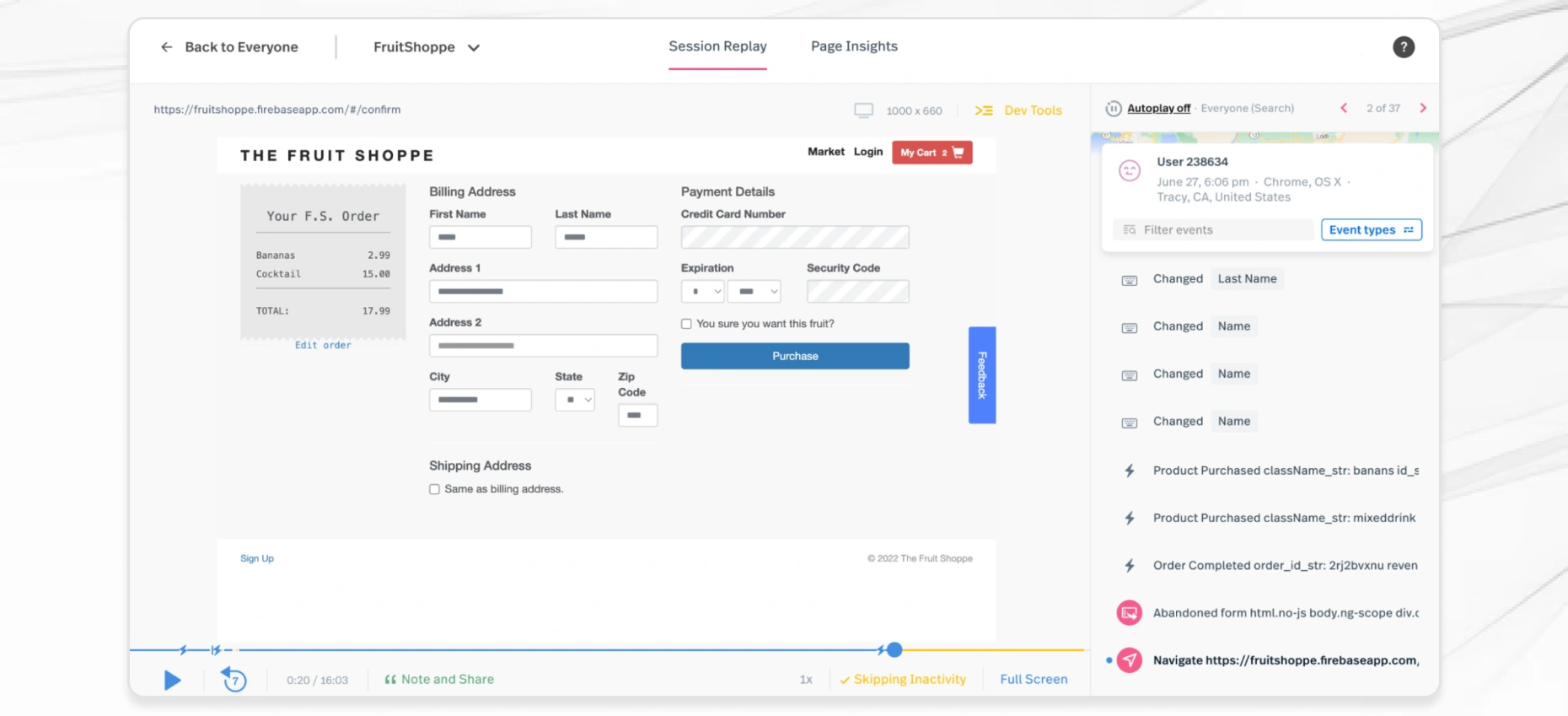
How far down a website does a user need to scroll before losing interest? The answer lies within scroll maps - these slightly animated tools illustrate how deep into your content users view and the point at which users begin to lose interest.
Scroll maps are valuable tools that provide insights into user scrolling behavior on web pages, helping to optimize content placement and enhance user engagement. By analyzing scroll maps, businesses can identify where users tend to drop off and adjust their page design accordingly. For instance, placing critical content and calls to action (CTAs) higher on the page can increase their visibility and effectiveness.
Every single click on your website has a reason behind it, and click maps assist you in understanding those reasons. One of the most widely used conversion optimization techniques involves analyzing click maps to determine which website elements attract the most attention.
Click maps provide details of where users actively click, whether it be a CTA button, image, or non-clickable object. If users attempt to click something that cannot be clicked, it indicates a problem. A SaaS company noticed its users were repeatedly clicking on a product image, assuming more details would emerge. By adding a link to the image, engagement increased by 30%.
Click maps enable you to focus on designs that enhance the user experience, boost conversion rates, and meet the needs of your audience. With Hotjar’s click maps service, the “red dots” can help you analyze which areas of your web page receive the maximum clicks, while the “cold dots” indicate areas with the fewest clicks.
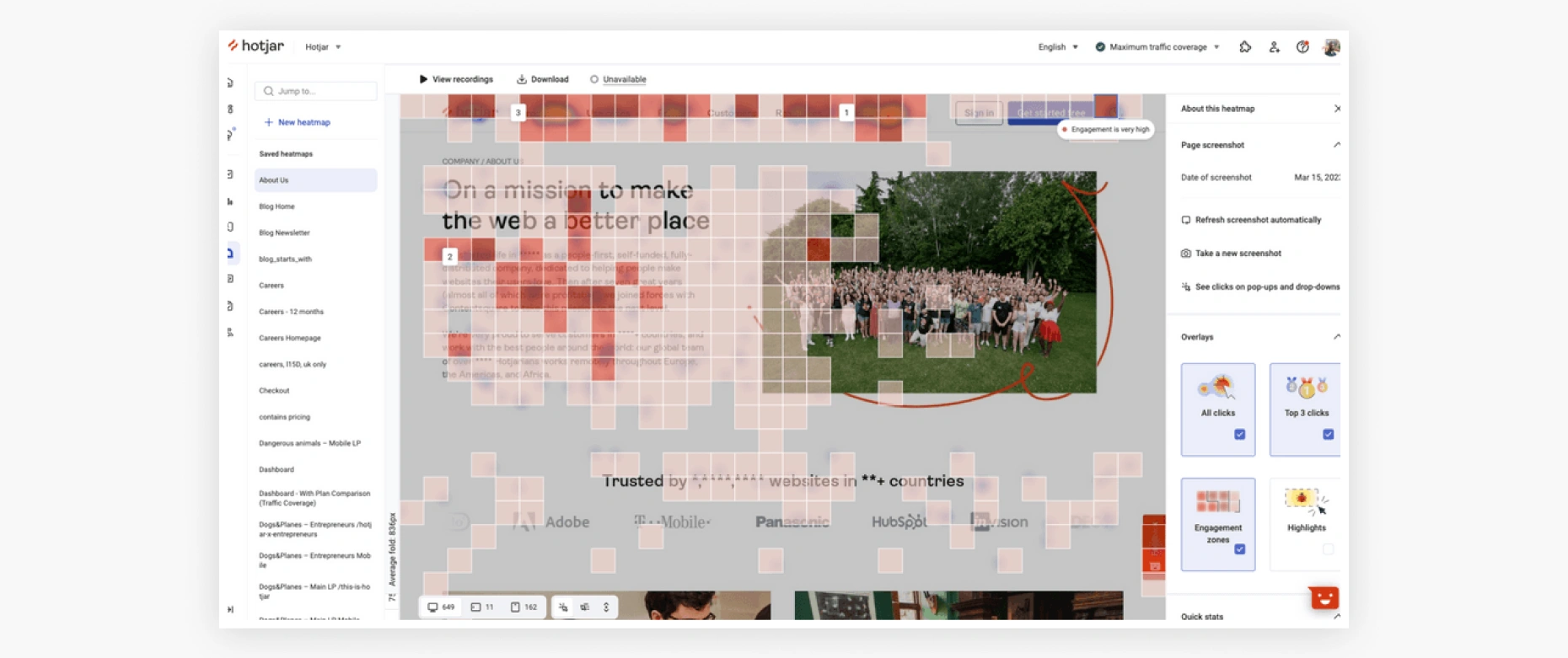
Treat bounce rates like a customer who walks into your shop, only to leave without uttering a single word. Understanding user behavior leaves a lot to be desired when it comes to engagement. Do pages take forever to load? Is the content irrelevant?
A good example is a travel website that, for reasons unknown, had a 70% bounce rate. Reducing bounce rates requires targeted conversion optimization techniques. After the audits, the website changed its landing pages to have faster load times and more explicit user messages, reducing the bounce rate by 30%. You can use your bounce rate data to help make your website easier to navigate, which in turn leads to increased user engagement and higher conversion rates.
Just a prompt on a screen helps attract the attention of a customer about to leave; an exit intent analysis will let you keep the user on your website for a little longer.
There are many different approaches for re-engaging users, such as offering smart pop-ups, surveys, or last-minute deals. For example, an e-commerce website experienced a staggering number of lost sales due to customers abandoning their carts. An exit-intent pop-up offering a 10% discount was implemented to capture the lost sales. This simple yet clever idea helped regain 18% of the lost sales. Tools like Sleeknote and OptinMonster can capture these moments and turn them from losses into profits. Sleeknote’s optimized exit-form pop-up may look something like this:
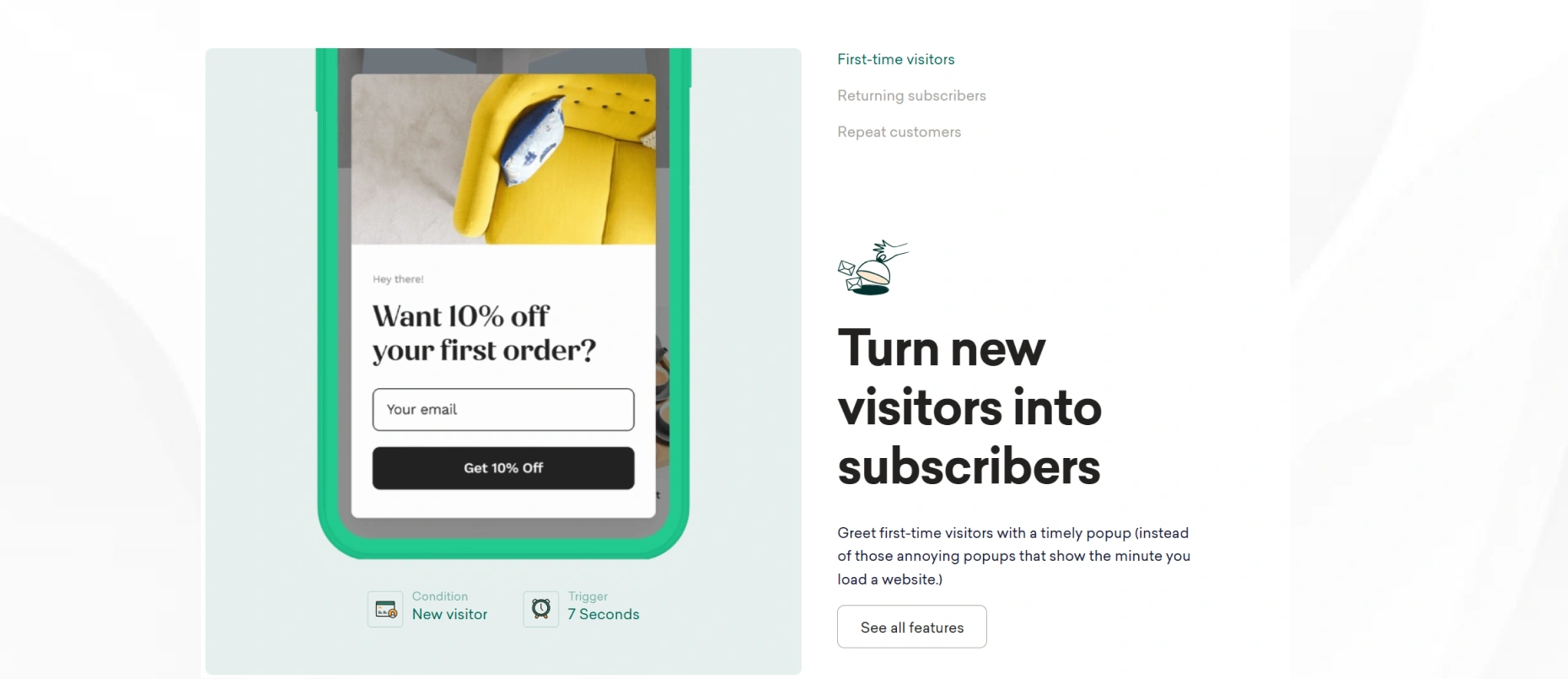
Sometimes, the best way to understand user behavior is to ask directly. Customer feedback surveys provide insights into pain points and preferences that analytics alone can’t uncover. For example, a tech company discovered through surveys that users found their pricing unclear. They simplified their pricing page, which led to a 20% increase in conversions.
Simple, targeted questions such as “What stopped you from completing your purchase?” can yield actionable insights. Tools like Typeform and Google Forms make it easy to collect feedback that shapes a better user experience.
Heatmaps turn user interactions into visual insights, highlighting the areas of your page that draw the most attention. Think of them as a heat-sensing camera for your website. Hot zones indicate where users actively engage, while cold zones indicate ignored areas.
Beyond just website behavior, heatmaps can also be used to visualize a wide range of data, such as:
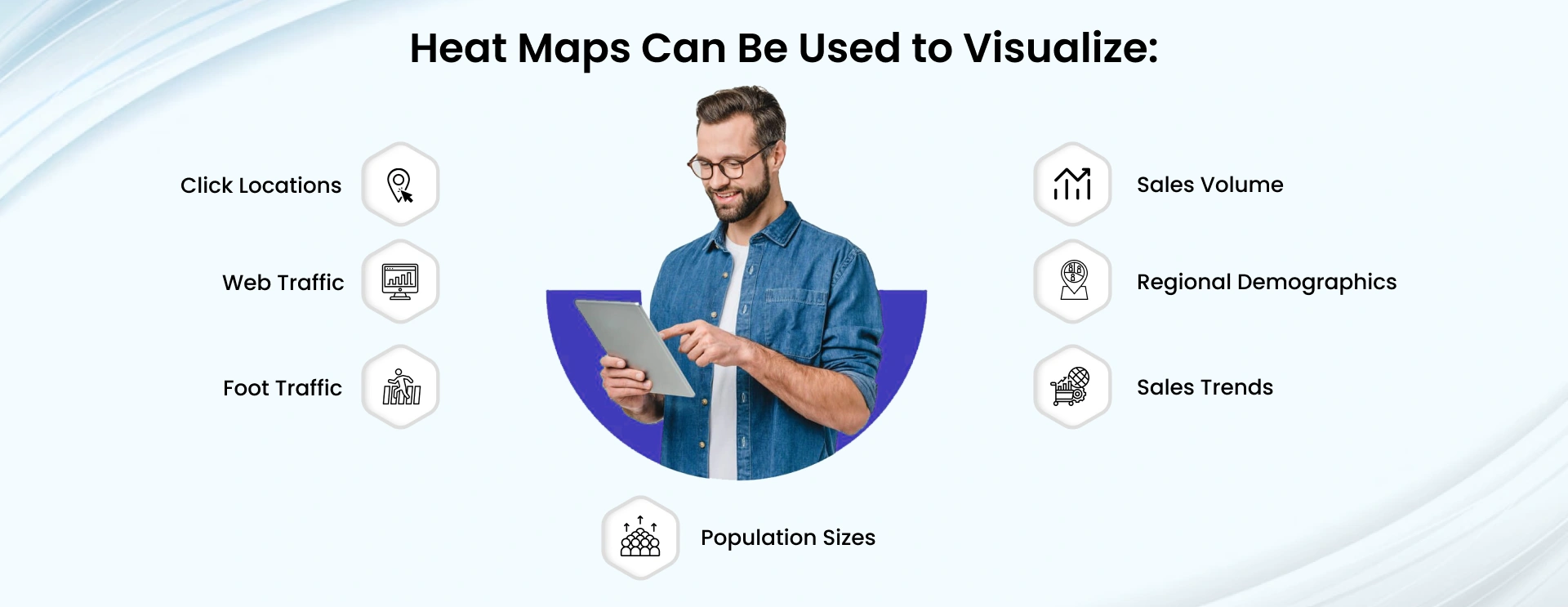
For example, a heatmap might reveal that your “Buy Now” button isn’t getting enough clicks because it blends into the page. Adjusting the color or placement could instantly increase conversions. With tools like Crazy Egg or Hotjar, heatmaps help you create designs that guide users naturally toward your desired actions.
This is what your Crazy Egg heat map analysis might look like:

Forms are often the final step in a user’s journey, but can also be a stumbling block. Form analytics track how users interact with your forms, revealing where they hesitate, abandon, or make errors. For example, a nonprofit discovered that users frequently dropped off on a lengthy donation form. By reducing the number of fields and adding a progress bar, they increased completions by 35%. Form analytics ensure that this critical touchpoint is smooth and user-friendly, maximizing your chances of conversion. Implementing a well-structured conversion rate optimization strategy ensures these improvements lead to consistent growth in user engagement.
In today’s multi-device world, understanding mobile vs. desktop behavior is non-negotiable. Users interact differently depending on their device, and your website needs to cater to these differences. For instance, mobile users may prefer larger buttons and simplified navigation, while desktop users might explore more detailed content. A retailer that optimized their mobile site with thumb-friendly buttons and faster load speeds saw a 20% increase in mobile sales. You can create tailored experiences that resonate with all users by analyzing device-specific behavior. A well-defined conversion rate optimization strategy considers these behavioral patterns to enhance user experiences across all devices.
Behind every click is a person with unique motivations and goals. Developing behavioral personas helps you understand these users on a deeper level. For example, you might identify a “browsing buyer” who needs persuasive content or a “value seeker” who responds to discounts. By tailoring your website’s messaging and design to these personas, you can better address user needs and drive conversions. Behavioral personas ensure your conversion rate optimization strategy is rooted in empathy and data, creating experiences that genuinely connect with your audience.
After establishing your UX and UI fundamentals, it's time to experiment with various strategies to optimize performance further. This is where A/B Testing and Multivariate Testing are used. A/B testing is one of the most effective conversion optimization strategies for determining which design elements and content variants lead to greater engagement. With A/B testing, you compare two versions of a page to determine which one performs best. The nice thing about A/B testing is that it lets you make informed decisions based on data. Suppose your homepage contains a "Learn More" button and an "Explore Now" button. A/B testing can help you determine which version creates more user engagement, allowing you to make more precise decisions. Here’s an example of alternate versions of A/B testing concerning headline options.
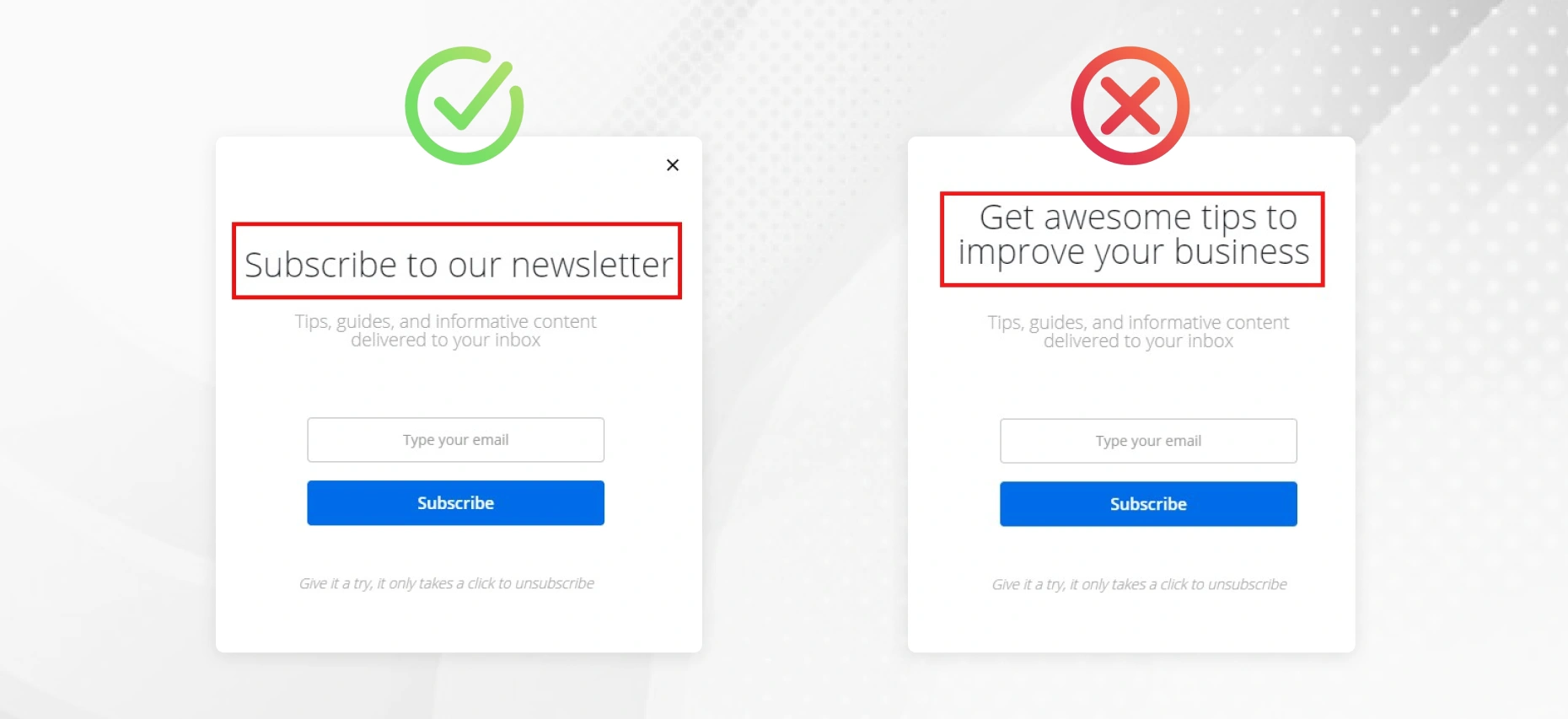
Multivariate testing goes one step further by testing multiple variables at the same time. In this case, you can test several headline, image, and button combinations to see how they interact with each other. This provides more in-depth information about what works together to create the optimal user experience.
Here’s an example from Hyundai Netherlands’ multivariate testing on their web page. Notice the differences between the control in the screenshot above and the changes made below:

You can see which factors directly affect conversion rates by testing and monitoring. Then, you can implement more focused changes to improve user interaction and increase sales or leads.
Your landing page is where a visitor decides to take action. It's a point of no return; the page can either generate leads or frustrate your visitors enough for them to seek out your competition. Landing page optimization isn't about making minor adjustments in headlines and CTAs; it's about clarity and congruence in delivering what the user wants when they land on the page.
For instance, if your ad promises “10% off today only,” but your landing page doesn't mention the discount or clearly explain how to claim it, you’ve immediately broken trust. Your visitors might feel confused, frustrated, or even misled and likely leave.
Good landing pages are laser-focused on what the user requires instantly. The copy needs to be brief yet impactful, and the design should effectively convey the value proposition in a way that cannot be ignored. A well-crafted landing page will cut distractions by eliminating non-essential features and concentrating on a solitary CTA, leading the visitor to conversion.
When we say ‘Content’, we refer to the information you feature on your site and the writing that talks specifically to your audience. Good content can resolve issues and tackle pain areas, but poor content will likely divert your users or fail to resonate with them.
For instance, if you are selling a product that can save time for small business owners, your content should address the exact issues they are experiencing: "Are you wasting too much time on tasks that can be automated? Our product streamlines your workflow, allowing you more time for growth." This method makes the user believe you understand their needs and have a solution.
With CRO, you ensure that each piece of content on your site, whether it's a blog article, product description, or FAQ, helps move the user further along the funnel. If your content is irrelevant or unintelligible, it not only won't engage users but can also drive them away from the page. Converting your content is about answering the user's questions and needs compellingly and using appealing copy that encourages them to take action. Feel you’re running short on time and don’t want to compromise on content quality? Tools like MarketMuse can help with their relevant content score set according to your needs.
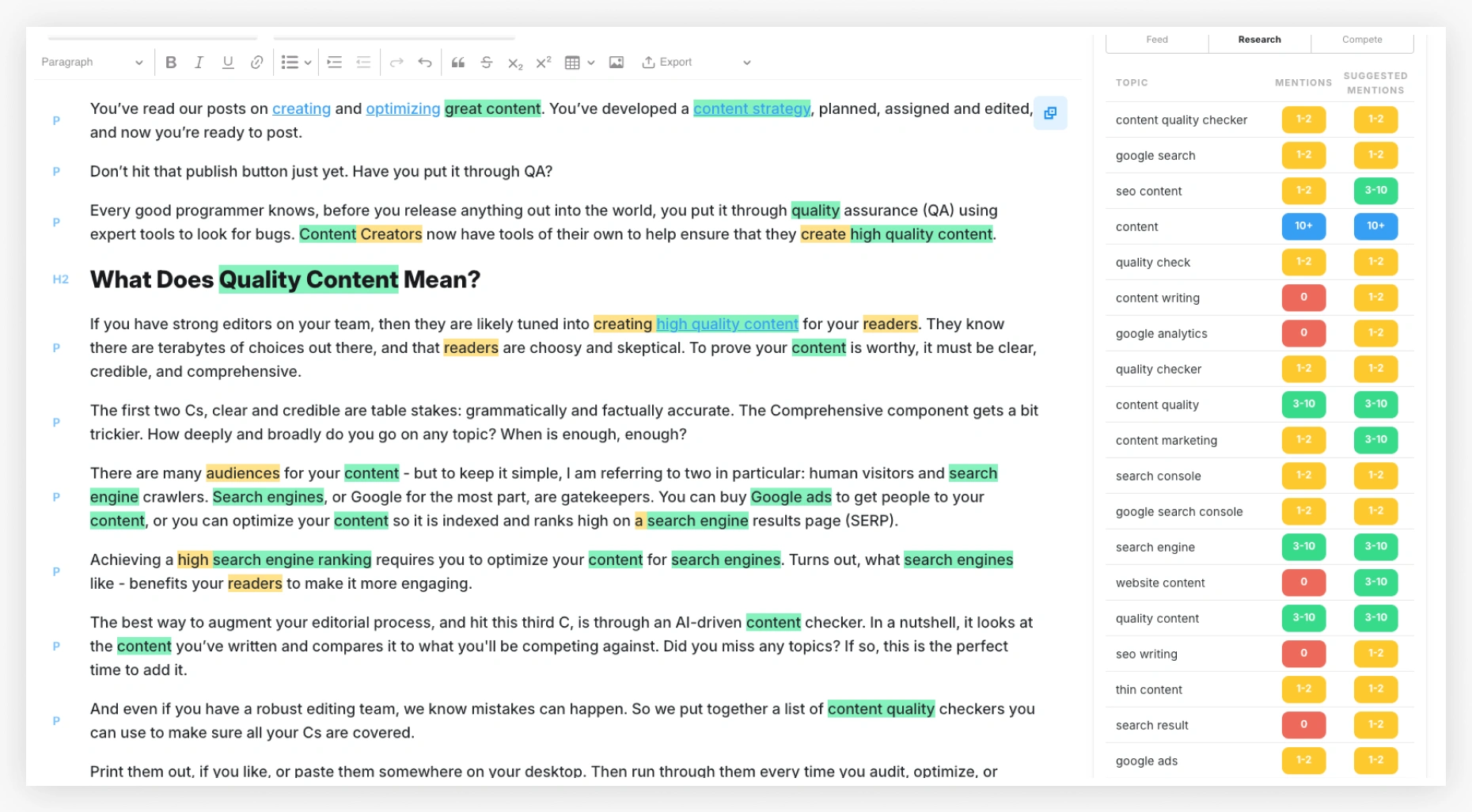
Forms are a significant hindrance to conversions. Users will give up if your forms are long, convoluted, or request too much information. Suppose you ask a visitor to complete a 10-field form simply to receive a quote; most visitors will drop off in the middle. You can significantly enhance conversion rates by simplifying the process by reducing the number of fields and making the form easier to use.
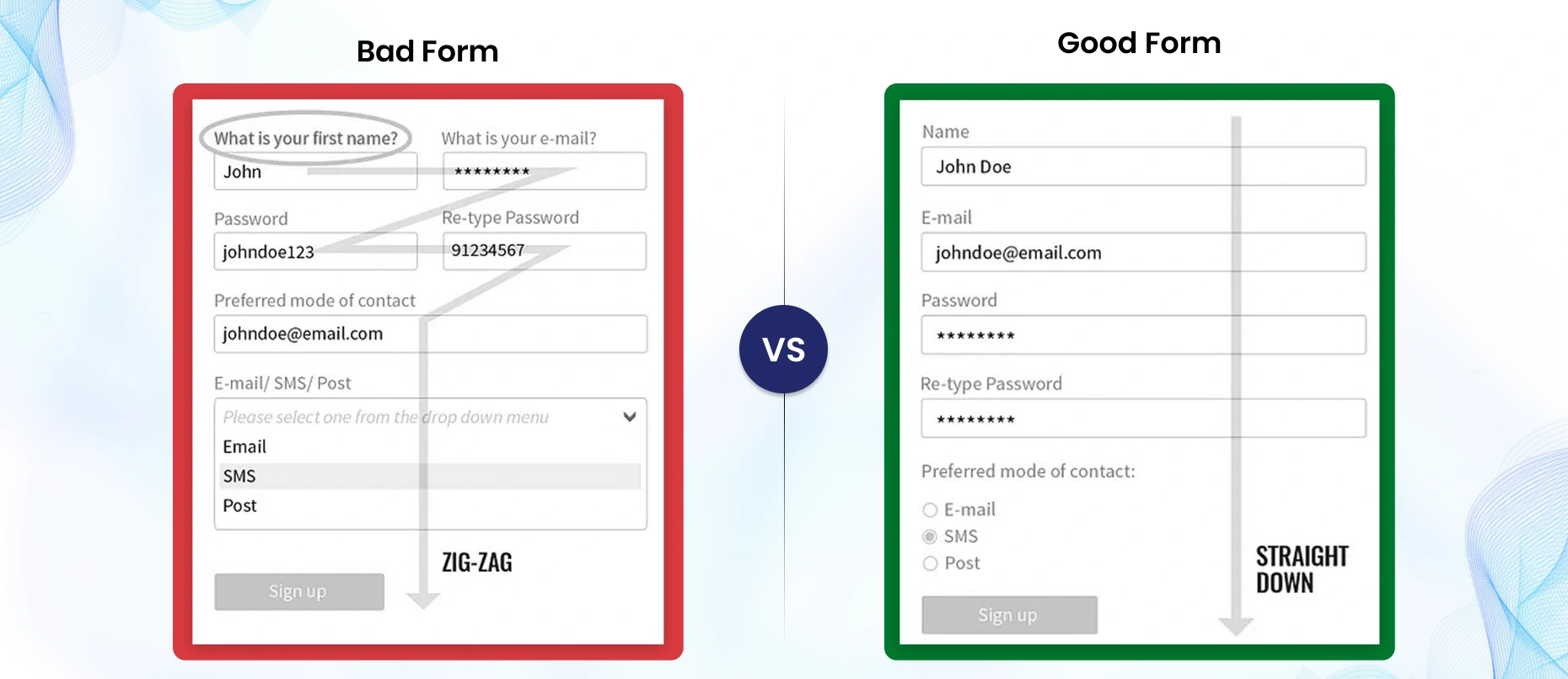
Likewise, CTAs must be clear, prominent, and well-placed. An ambiguous CTA, such as "Submit," does not inform the user what will happen next. A more effective CTA could be "Get Your Free Quote" or "Begin Your Free Trial." The point is to ensure that the CTA aligns with the user's intent and is readily accessible at the appropriate time in their process.
For example, if a person is browsing a service page and has just read through their pain points, and an immediate CTA for a consultation that says “it's free…” appears, that's the moment they'll take action. Placing CTAs strategically across your website, particularly on high-conversion pages like product pages or landing pages, reminds visitors of the action to take. On the other hand, if you make Crate & Barrel’s mistake of using a poorly designed CTA with poor color contrast, that conversion you desperately want will not happen anytime soon.
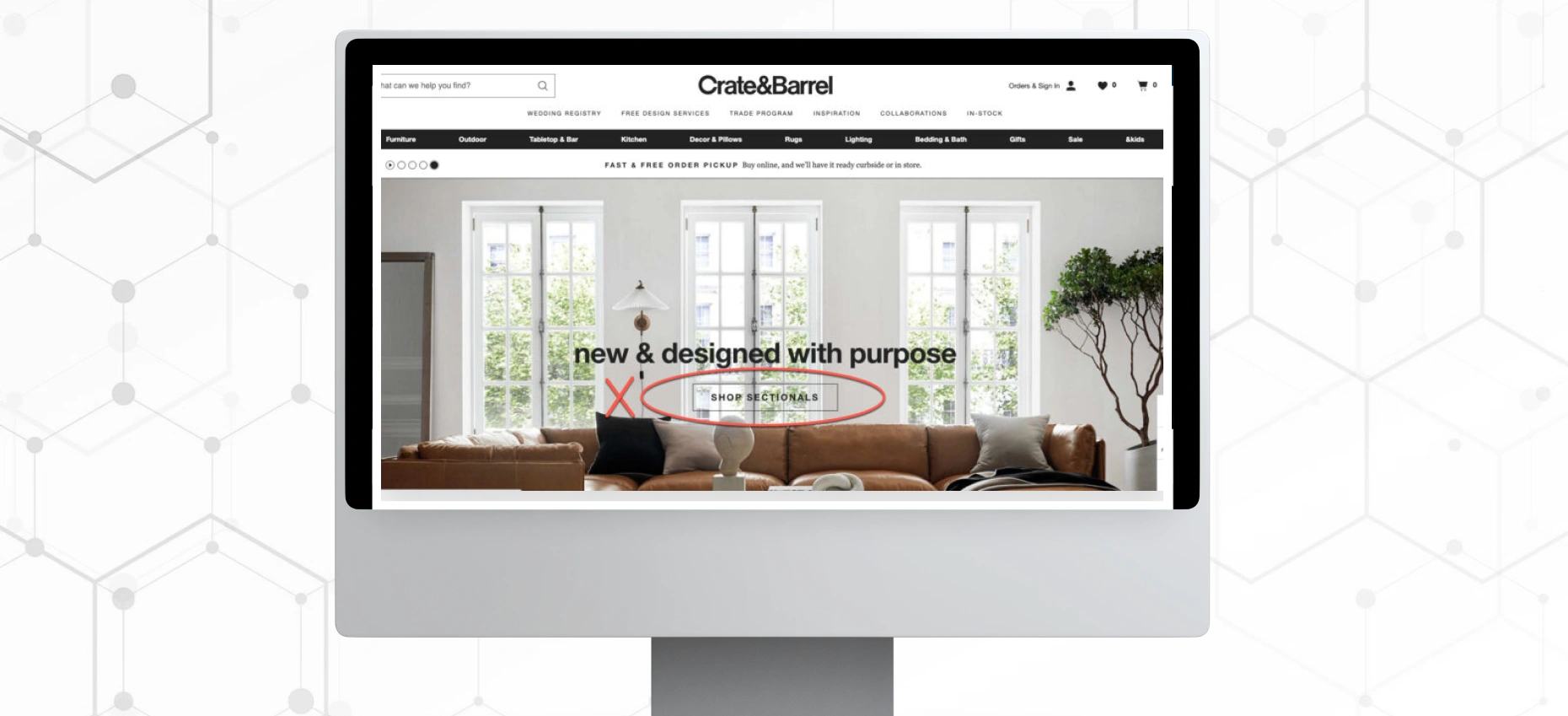
Trust is the foundation of any conversation. Without trust, you’ll struggle to get people to follow your intent. Imagine a user considering a purchase, only to find no signs of security or social proof, customer reviews, security badges, or testimonials. They're likely to hesitate and leave the site.
Trust signals, like customer reviews, security badges, testimonials, and case studies, can significantly increase conversion rates by reinforcing your credibility. Users want to know that others have had a positive experience with your website or product, and trust signals help build that confidence. They serve as the online equivalent of word-of-mouth recommendations, encouraging users to take the next step.
For example, adding “as seen in” logos or a testimonial from a respected client can make users feel more comfortable and increase their likelihood of converting. You can follow JanBask’s lead here:
Conversion rate optimization is much more than minor modifications. Make the conversion funnel as efficient and straightforward as possible, aligning content and visuals to support the user's journey. This will allow visitors to take the necessary steps without resistance. Increasing conversion rates and overall website performance. Effective conversion rate optimization strategy best practices focus on simplifying user journeys, optimizing content, and ensuring mobile responsiveness.
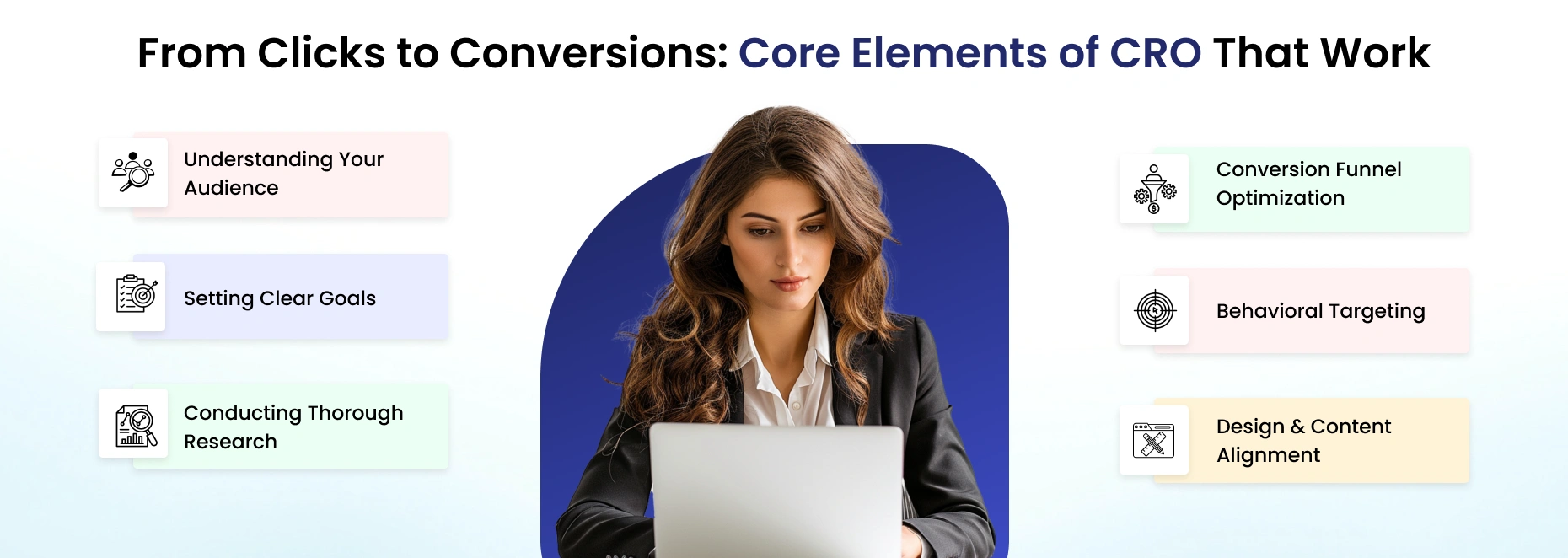
It’s crucial to know who your users are and what they need. You need to analyze their behavior on your site, understand their pain points, and identify opportunities where they may drop off or hesitate to complete actions. Tools like Google Analytics help track these insights, guiding your conversion rate optimization strategy.
Your CRO efforts should have a trackable target, such as boosting the conversion rate or lowering the bounce rate. Clearly and measurably define the conversion metrics, track your progress, and optimize your next steps.
Data-driven decision-making and testing are at the core of conversion rate optimization best practices, ensuring that every change contributes to an improved user experience and increased conversions. Research is also essential for finding opportunities for improvement. For example, by analyzing user behavior and conducting A/B testing, you can assess the difference that a particular change, such as a design change or content edit, makes. Then, make data-driven changes that lead to better conversions.
The conversion funnel is the pathway visitors follow on your website, from when they land on a page to when they complete an action (e.g., making a purchase, signing up). Optimizing the conversion funnel means addressing each step carefully to eliminate friction, minimize distractions, and guide the visitor smoothly. From clear CTAs to intuitive navigation, every element should make the user’s journey feel seamless, keeping them engaged and focused on their goal.
It gives an idea of how you behave on your site, which is known as behavioral targeting. With tools like heatmaps, session recordings, and analytics, you can track where users click, how far they scroll, and where they drop off. This insight allows you to tailor your site to better address their needs. For example, if users drop out of the cart at a specific point, you can better streamline that part of the journey and give them targeted incentives to continue.
The design and content should be aligned to improve conversion rates. Your website's design should be oriented toward the needs of your target audience, while also incorporating visual elements such as colors, fonts, and buttons that are both aesthetically pleasing and functional. The copy must relate to the users’ pain points and desires and represent your value proposition in the fewest words.
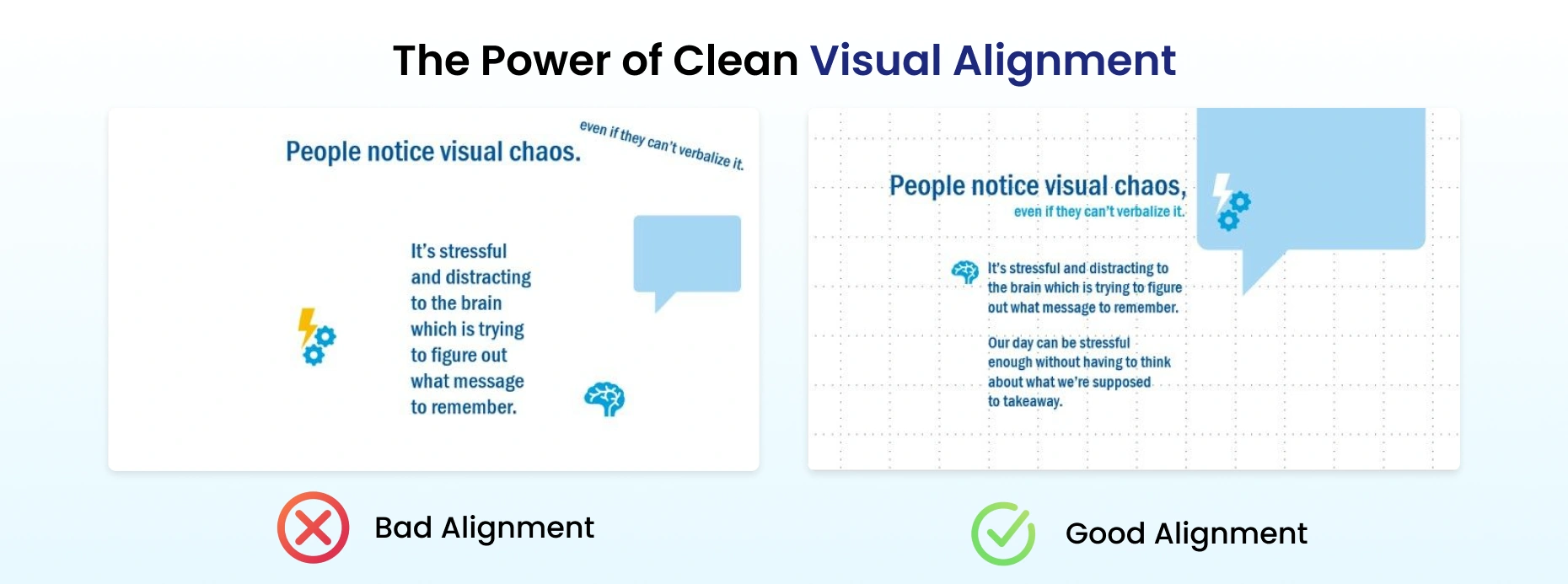
A seamless interaction between design and content should guide users to take action. Users will leave the process if the content is convincing but the design is cacophonic, and vice versa. Hence, one of the most crucial conversion rate optimization best practices is aligning website design and content to create a seamless experience that encourages users to take action.
Less friction equals a more straightforward user journey. From fewer steps in the checkout process to simple forms and clear call-to-actions (CTAs), every element needs to be optimized for clarity and ease. Eliminating unnecessary distractions, simplifying the process so users know exactly what to do next, and providing straightforward navigation are fundamental conversion rate optimization best practices that lead to better results. This helps you stay on track, minimizing drop-offs and increasing conversions.
Imagine you’re spending thousands of dollars on ads to bring people to your website. That money is wasted if your site isn’t optimized to convert visitors into customers. CRO bridges bring people in and get them to take action. Without it, you’re leaving potential revenue on the table.

Any business invests in marketing, whether PPC advertising, SEO, or social media marketing. But if you're not converting the traffic you already have by optimizing the website, you're wasting your efforts. CRO maximizes your return on investment (ROI) by maximizing the value of existing traffic.
Engagement precedes conversion. Users who engage with your website by clicking, spending more time on pages, viewing videos, etc., have a higher tendency to convert. CRO attempts to enhance those aspects that contribute to building engagement, such as UX/UI, contextual content, and messaging.
An optimized website provides a superior overall customer experience. By gaining insight into user behavior and navigation, design, and content optimization, a CRO enhances how users interact with your site, leading to greater satisfaction and potential return visits or purchasing behavior.
CRO decreases bounce rates by improving content and ensuring the site meets visitors' expectations. If users perceive that your site is irrelevant or cannot find what they need promptly, they will bounce. CRO corrects this by making your website user-friendly.
The online world is competitive, and CRO keeps you ahead by constantly testing and refining to discover what works best for your audience. You can continually outdo others in your niche by monitoring your competitors' tactics, staying aware of market trends, and experimenting with new concepts.
CRO lies at the heart of every thriving business that has achieved sustainable growth and longevity. It extends across all aspects of marketing, making it challenging to determine whether your CRO efforts are practical or align with your broader growth strategy.
We frequently hear questions from clients, such as:
How do we identify if our website's conversion rate aligns with industry standards?
Are we successfully turning enough visitors into paying customers?
Should we prioritize CRO to improve overall customer engagement and satisfaction?
Regardless of the specific query, the answer remains consistent: “Yes, you should optimize your conversions. CRO is only as impactful as the continuous improvements it drives.”
Your growth strategy is about transitioning from where you are now to where you aim to be. CRO enables this journey by turning passive website visitors into loyal customers. For any business focused on growth, three core elements are critical to success:

These three pillars are indispensable for maintaining a viable and financially sustainable business.
Customer Acquisition: Bringing in new customers drives revenue and business growth.
Retention: It’s equally important to ensure that your existing customers return, as this reduces the costs associated with acquiring new ones.
Lifetime Value (LTV): A strong LTV metric reflects the average revenue each customer generates, a key indicator of long-term success.
Despite its importance, many businesses struggle to implement CRO effectively at different stages of their growth journey.
Some focus too heavily on conversion optimization at the later stages of the customer journey, missing earlier engagement opportunities. Others attempt to implement CRO too soon, without fully understanding their audience, which leads to misguided efforts.
By aligning CRO with your growth strategy, you ensure that every step, from acquiring new customers to maximizing their value over time, is optimized for success.
The most common problem is a mismatch between your CRO and general growth strategies, preventing them from working harmoniously.
It logically leads one to wonder:
When is the time to put CRO first?
A CRO should be part of your business processes at any stage of growth. But remember that as your business matures, your CRO strategies and areas of emphasis must also evolve.
The growth of a business can typically be broken down into three broad phases:
The focus and methodology for CRO significantly change at each phase. Strategies that pay off in the early days of your business may become obsolete when it matures, and sophisticated methods may not be appropriate for a nascent venture.
To get the most out of CRO, you require a tailored strategy that suits the unique needs of each growth stage. Let's dissect what CRO is at each stage and how it can be optimized to help your business grow.
At the early stages of business, the primary challenge is building trust and awareness while guiding visitors down the sales funnel. Your website is crucial because it's the first impression of your brand, and an engaging, optimized site can make a significant difference in driving conversions. Here’s how CRO helps:
Target Audience Optimization: Use targeted content that aligns with buyer personas to target the right audience. For example, if you are marketing a product to young professionals, your design, imagery, and language should resonate with their values and needs.
Building Trust with Testimonials and Case Studies: Since trust-building is crucial here, including testimonials, case studies, and social proof like product reviews or industry awards can create engagement and lower the bounce rate.
Practical UI/UX Design: Incorporate minimalist and clean UI/UX designs emphasizing user experience, quicker page loading, and responsive designs. Simple navigation and well-organized calls to action (CTAs) are crucial for guiding users through the conversion funnel. Conversion-Focused Design: Highlight main actions, such as "Sign Up for Free" or even "Get Started," that direct users to accomplish a goal.
As users scroll through the website, the top of the page should offer a clear value proposition that immediately communicates why they should stay on the page. Moving down, provide engaging content such as product benefits, user testimonials, and trust signals. Make the CTA buttons prominent throughout the page to keep visitors engaged. Don't allow them to navigate away without first being introduced to the value your business provides.
Example: Maven Clinic is a U.S.-based healthcare platform delivering personalized virtual care for women and families, specializing in maternity, fertility, and pediatric health.
Key website strategies driving engagement:
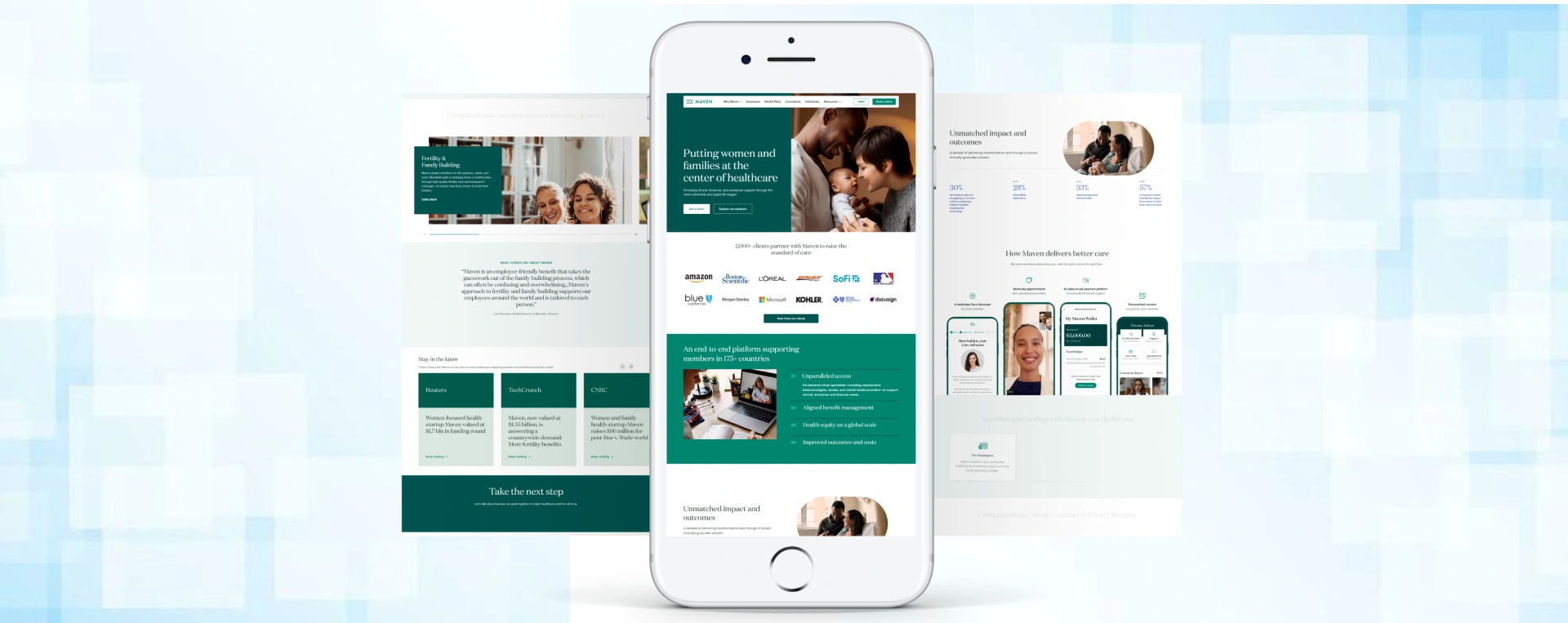
As your business grows, the focus shifts from generating traffic to refining the user experience (UX) and enhancing the conversion funnel. At this stage, you have a better understanding of your audience, and CRO can be used to maximize your website’s effectiveness in converting engaged users into paying customers.
As users scroll, ensure that each section builds on the one before it. The content should gradually move users from awareness to consideration to decision-making. For example, start with an introductory value proposition, follow up with social proof, and then provide the final CTAs with specific offers. Let's take a look at an example:
Example: Blenders Eyewear excels in CRO implementation by leveraging bold, eye-catching visuals that instantly capture attention and reflect its vibrant brand personality. Their strategic use of user-generated content, such as customer photos and reviews, builds social proof and trust, encouraging first-time buyers. Their loyalty rewards program also incentivizes repeat purchases, fostering long-term customer engagement. By combining these tactics with seamless navigation and clear call-to-actions (CTAs), Blenders creates an engaging shopping experience that drives conversions and fosters customer loyalty.
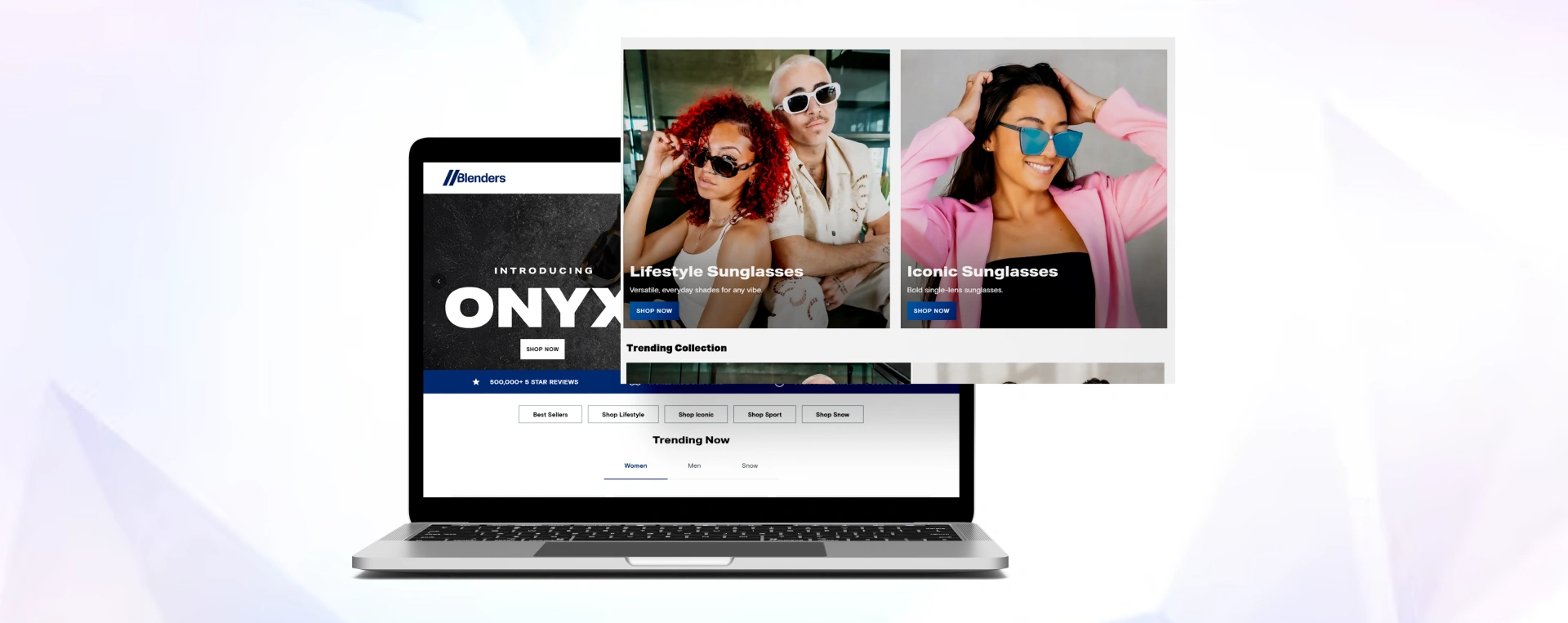
At this stage, your brand is likely well-established, and the primary goal is to optimize conversions and increase customer lifetime value (CLTV). You want to grow sustainably and use sophisticated CRO strategies to convert loyal customers and increase engagement.
For repeat customers, you’ll want to use engaging dynamic content as they scroll, such as personalized product recommendations or special offers based on their history. As they reach the end of the page, use exit-intent pop-ups to offer special discounts or incentives and help retain them. Let's look at an example to make you understand better:
Example: Going (formerly Scott's Cheap Flights) is a U.S.-based travel company dedicated to helping travelers discover and book incredible flight deals. With a subscription-based model and a user-centric approach, they make affordable travel accessible to millions, combining expertise with a personal touch.
Instant Value Delivery: A prominent search bar and clear subscription options make the user journey easier.
Tailored Experiences: Personalized content based on travel preferences keeps users engaged.
Credibility Builders: Testimonials, success stories, and media features establish trust and authority.
Dynamic Email Alerts: Custom flight notifications and exclusive deals encourage repeat visits.
Mobile-First Approach: Seamless navigation and optimized CTAs ensure a smooth device experience.
Engaging Visual Design: Eye-catching elements guide users naturally toward action, boosting sign-ups and retention.
Community Vibe: A personal, insider feel transforms users into loyal brand advocates.
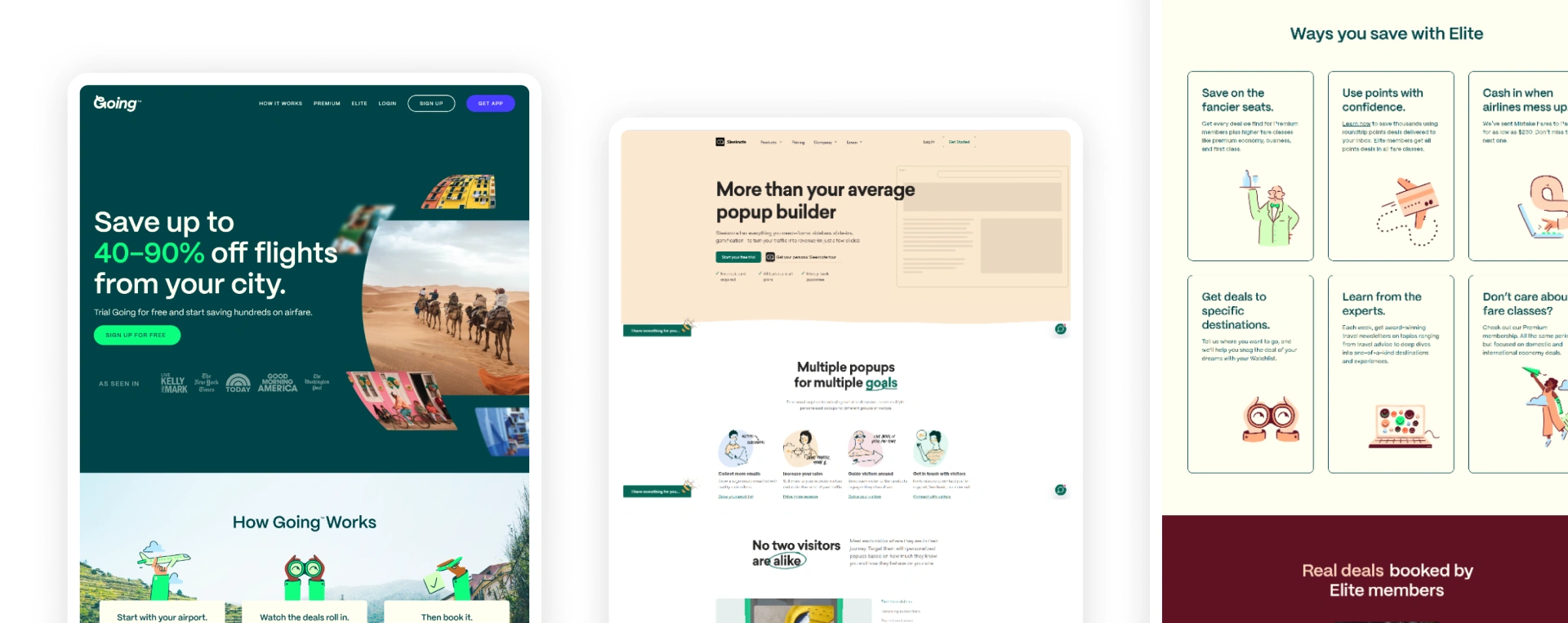
Tracking the most important metrics is necessary to examine the success of your CRO. Your conversion rates determine how effectively your site converts users into customers. Bounce rates inform you of the individuals who leave your site without doing anything else, and you identify resistance points. Customer Lifetime Value (CLTV) and Average Order Value (AOV) help you measure the total value of a customer and the average revenue per sale, respectively. These include Google Analytics, Hotjar, Crazy Egg, and Optimizely, which provide insights into user behavior and A/B testing.
Lastly, statistical significance enables the changes you implement to be backed by concrete evidence, which means you're making informed, data-driven decisions that allow you to optimize continuously.
Your website can turn visitors into loyal customers, but only if it is optimized to its fullest potential. At JanBask Digital Design, we specialize in transforming ordinary websites into high-performing platforms that drive measurable growth. Whether you're navigating the challenges of an early-stage business, scaling operations as a mid-sized company, or refining strategies as an enterprise, our tailored conversion rate optimization techniques are built to meet your unique needs.
From crafting engaging user journeys to implementing cutting-edge design and functionality, we ensure every click, scroll, and interaction adds value. Let’s redefine your digital success story. Want expert help with implementing CRO? JanBask Digital Design has you covered.
Explore our full range of CRO services to get started.
Discover the CRO Strategies to Boost Conversions

M
Simple, clear, and full of ideas I could implement without hiring a full team. Great value for small businesses.
A
The CRO strategies we adopted—from simplifying navigation to testing pricing page layouts—had an immediate impact. Using session recordings and form analytics, we identified drop-off points we hadn’t noticed before. After optimizing those elements, our trial sign-up rate more than doubled in just a month. CRO isn’t optional for SaaS—this blog helped us take it seriously.”
J
I didn’t think changing button placement or rewording headlines would matter much. But after making the small tweaks this blog suggested, our homepage bounce rate dropped by 22%, and bookings through our contact form increased by 35% in three weeks. These CRO tips were easy to apply—even for someone non-technical like me.
D
I had no idea what conversion rate optimization even meant before this. The blog helped me set up basic tracking tools and test our landing pages. Still early days, but we’re already seeing more quote requests.
A
We’re a local service business, and CRO felt like a big-brand strategy—until this blog showed us otherwise. Updating our CTA buttons and adding social proof boosted bookings by 22% in two weeks.